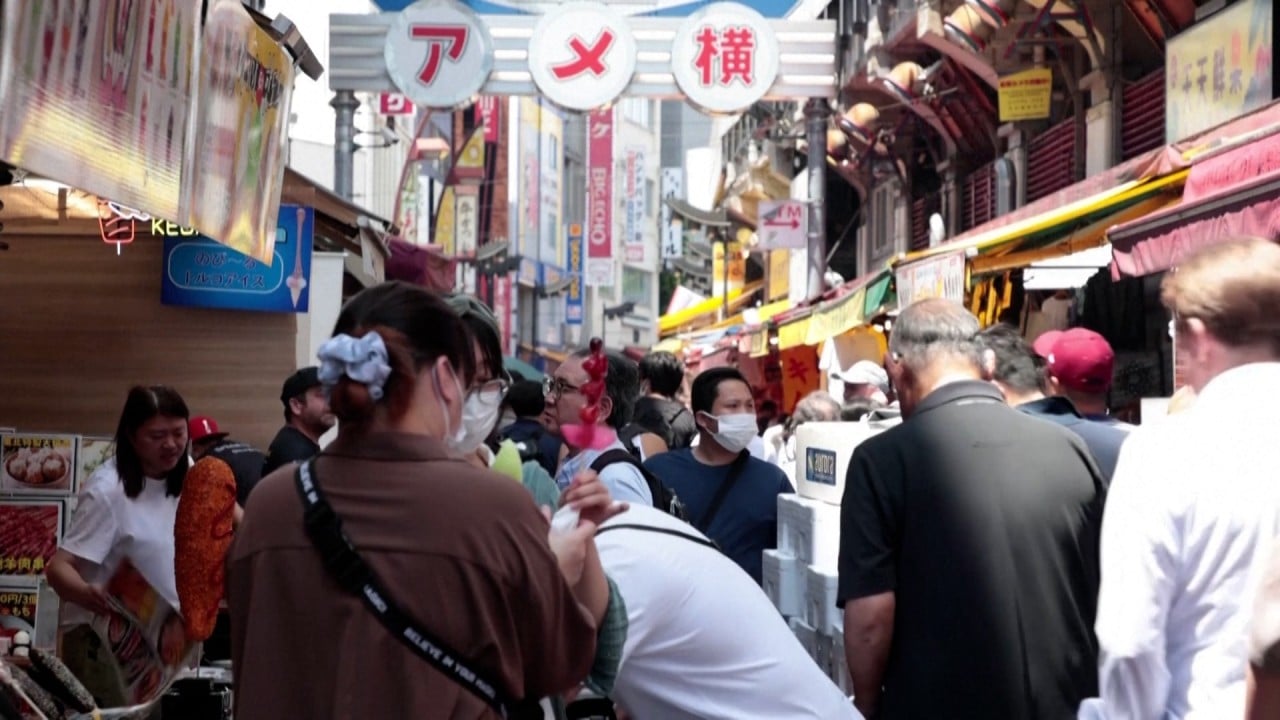Japan’s inbound travel sector expects bumper year, as tourist numbers approach pre-pandemic levels
[ad_1]
And that has left the industry confident that 2024 will set records.
Chinese tourists make a welcome return to Japan for high-end medical services
Chinese tourists make a welcome return to Japan for high-end medical services
“Japan was extremely late to open up because the government put the coronavirus on the same level of danger as Ebola until May of last year, so there has been a really good recovery when you think that Japan has only been fully open for nine months,” said Naomi Mano, president and CEO of high-end inbound travel firm Luxurique.
“But the situation is very positive right now, with lots of clients spending more than they might have in the past because the exchange rate is in their favour,” she told This Week in Asia.
“The yen being so weak makes Japan seem like a bargain all of a sudden, and travellers are now seeking exclusive, immersive experiences while they are here.”
The yen was trading at around 115 against the dollar in February 2022, but it had tumbled to the 150 range by October due to a series of interest rate hikes by the US Federal Reserve.
“We have seen an increase in interest in wellness and mindfulness experiences, and people are no longer worried about travelling outside the big cities as they search for one-off experiences,” said Mano.
The relatively low price of travel to and within Japan has caused an increase in budget travellers, she pointed out, which is placing pressure on accommodation and transport and stoking fears in some particularly popular destinations – such as Kyoto – that perhaps locals will soon start to complain about problems associated with overtourism, Mano said.
It is difficult to know how it will be in the future, but I do not think we will be going back to 2019 any time soon
“It is not clear if the Chinese market will come back like it was in the past because the government there has imposed new taxes on imported goods and the market is evolving,” she said.
“It is difficult to know how it will be in the future, but I do not think we will be going back to 2019 any time soon.”
Simon Robinson, president of resort property operator Hokkaido Tracks, in the ski resort of Niseko, said the town “is the busiest I have ever seen it, and that includes before the pandemic.”
“Prices are up across the town, but people are still spending, and our occupancy rates right now are excellent,” he said.
Travellers who stay at traditional properties through The Ryokan Collection are looking for a “uniquely Japanese experience of staying in a ryokan having an onsen and eating a kaiseki meal, said Kelly Kim, the company’s director of sales and marketing.

“The ‘ryokan’ that are members of our group are going to be busy throughout the coming year, but especially during cherry blossom season in the spring and then again when the autumn leaves change,” she said.
Masayuki Kinoshita, assistant general manager of the Trunk hotel in Tokyo’s Shibuya district, admits to being deeply relieved that the challenges of the last two years are over.
“In terms of bookings, things are very positive, while hotels have also raised room rates to put us on a par with New York and European cities,” he said.
“Japanese hotels have for a long time been very cheap in comparison to other countries, but even though rates have risen, we still have the same high occupancy rates.
Japan’s post-Covid tourists shift spending to crafts as Chinese stay home
Japan’s post-Covid tourists shift spending to crafts as Chinese stay home
“I think foreign travellers are becoming more adventurous and want to do and see things they have never been able to experience before,” he said.
“They are doing more research on the places they are going to, so they are more informed, and they are getting away from the traditionally popular destinations of Tokyo, Kyoto and Osaka.
“A couple of years ago there were virtually zero foreign travellers going to Karuizawa, for example, but there are so many people there now.
“Looking ahead, I think virtually every hotel in Japan is going to see its highest ever revenue in 2024 and, personally, I’m really glad that the tourists are back,” he said.
“Things were really difficult for us there for a while, and we came close to bankruptcy during covid, but that is behind us now.”
[ad_2]
Source link


